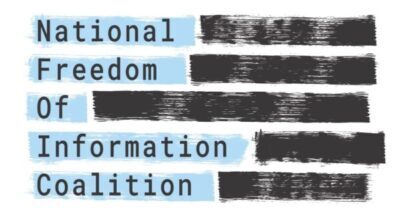Oct. 05, 2011
COLUMBIA, Mo. — Michael Morton walked out of a Texas prison with much to be thankful for: Great appellate lawyers and the Innocence Project. The probative, scientific certainty of DNA. A justice system which, despite humongous flaws, will own up and admit mistakes, at least when faced with indisputable evidence.
Free now, 25 years after his conviction in the 1986 bludgeoning death of his wife, Morton was circumspect leaving prison yesterday (Oct. 4), in part because he is still awaiting the final adjudication of his full exoneration.
“I thank God this wasn’t a capital case . . . because it gave these saints here at the Innocence Projects time to do this," the 57-year-old former grocery store employee said.
But besides those lawyers, the grace and mysterious ways of his Almighty, and the genetic science that now points to someone else, Morton might also find cause to show a little gratitude today for an unsung, often-unappreciated statutory hero: the Texas Public Information Act.
DNA — pointing now to a convicted offender identified through a national crime database and suspected by authorities in another 1988 Austin murder – often gets deserved credit, amid much fanfare, when wrongful convictions are dramatically righted. Just Google the Morton case and read yesterday’s and today’s headlines.
Politics might also be taking top billing in some headlines in days to come, were it not for Gov. Rick Perry’s plunging popularity.
Perry appointed Williamson County District Attorney John Bradley, a key figure in the Morton case and another case in which many believe an innocent man was executed, to something called the Texas Forensic Science Commission. This might be the lead story on talk television today if Perry was still Republican frontrunner. There have already been media accounts that have forced Perry to address the case of Cameron Todd Willingham, executed in 2004 after being convicted in the 1991 arson murder of his three small children
But the role public records played in the Morton case was far too important to be relegated to an overlooked, ho-hum backseat. Although all are important, it would be unfortunate if that role fully overshadowed by presidential politics, the wondrous significance of DNA or the unrelated Willingham case and science that suggests it, too, was a wrongful conviction.
It was through a records disclosure request, fiercely resisted by Bradley and county sheriff’s office, that Morton’s appellate lawyers learned damning things about the investigation that left Morton accused in his wife’s brutal slaying. It was a shoddy probe, plagued by tunnel-vision, and one in which leads were ignored, wild assumptions were made and, worse yet, important clues and information that pointed to someone else were unconstitutionally hidden from Morton’s defense team.
Those records include the transcript of a police interview with the victim’s mother in which she told a detective her three-year old grandson had seen another man beating his mother to death.
There was a telephone message from a San Antonio police officer informing detectives that Christine Morton’s credit card had been used in that city, and that the officers could lead detectives to the woman who used it. There were reports about neighbors seeing a strange man in a green van lurking near the house. And there was a check made out to Christine Morton that was cashed with a forged signature nine days after she was killed.
Why those leads were not followed, and shared with the defense team decades ago, as they should have been, bring up one set of questions. Why the county sheriff’s office and district attorney fought so hard to shield them from disclosure decades later is an entirely different, equally important one.
If you care about good government and justice, now would be a good time to ask if the records that helped to free Michael Morton would be readily available under your state’s public disclosure laws. Would it be easy and a slam-dunk? Or, would it be a difficult battle that might take years? If you’re inclined to take the time to ask those questions, please remember that the state of the law is not just the statute, but also the twisted interpretations agency bureaucrats might try and the binding interpretations the courts make.
In Washington state for example, the plain language of the statute suggests those records would be public and available upon request. But under a 1997 state Supreme Court ruling, law enforcement could probably refuse and get away with nondisclosure almost indefinitely, using the lamest of excuses. In several Midwest states, including Missouri, similar records in law enforcement files would probably have been available any time between Morton’s conviction and his release yesterday. But thanks to legislators’ misplaced zeal for protecting the interests and privacy of the wrongfully accused, those same records would probably now be withheld, offering cover and impunity for the officials who did the wrongful accusing.
Horrifying as it is when we learn that an innocent person has been wrongfully accused, imprisoned for decades, or worse yet put to death, the times that they lead to meaningful reforms are far outnumbered by the times the public brushes it aside as just another fluke after a few days of civic outrage.
So, it is a reach for me to suggest that the illustrative lessons of the Morton case be the impetus for open government reform. But it is something to think about. The important role public records played in freeing Morton must not be overlooked.
— by Kenneth F. Bunting, executive director, NFOIC
